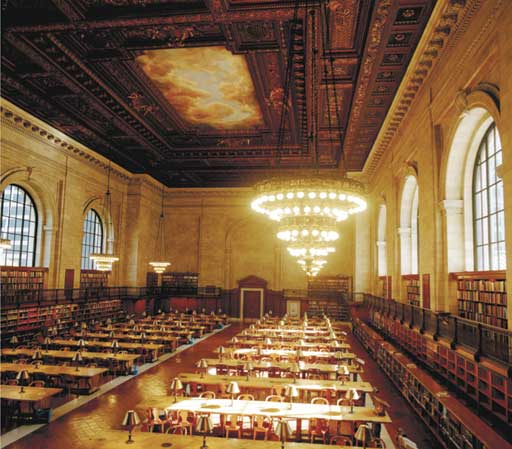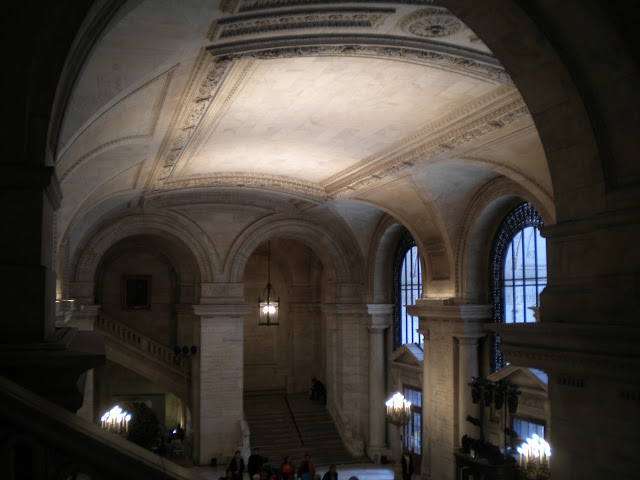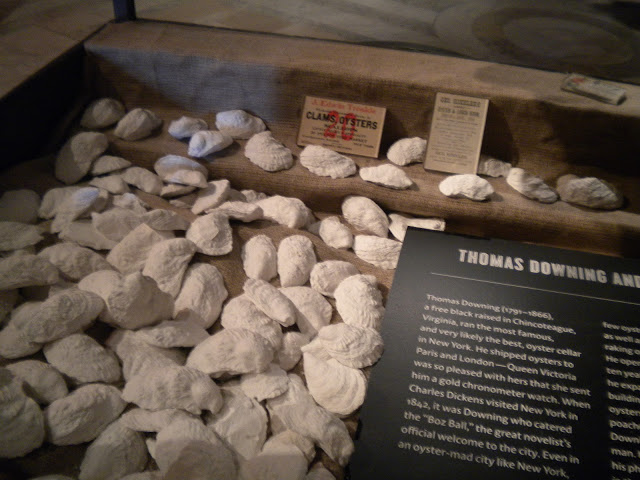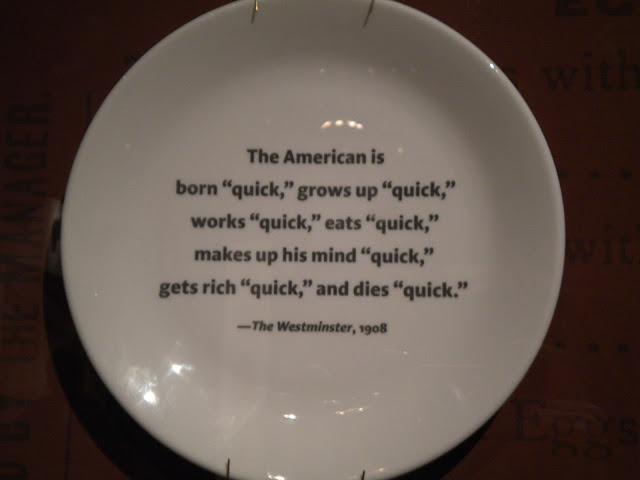

| Visitors Now: | |
| Total Visits: | |
| Total Stories: |

| Story Views | |
| Now: | |
| Last Hour: | |
| Last 24 Hours: | |
| Total: | |
The New York Public Library
As a librarian there are libraries in the world I dream about working in-the Library of Congress in Washington D.C., the British Library in London, and then on a slightly more down to earth scale, the main branch of the New York Public Library.
Just as in Pittsburgh, New York City is home to many historic libraries including the flagship building in the New York Public Library system, located in midtown Manhattan on Fifth Avenue at the intersection with 42nd Street. Although Fifth Avenue is home to a vast array of impressive buildings-100 years ago the opulent mansions built at the height of the Gilded Age and the Progressive Era and today the towering skyscrapers-the New York Public Library has always stood out, has always exuded a sense of importance and majesty. It opened in 1911 and cost an astounding $9 million to build, an unimaginable figure in the early 20th century.
The exterior stretches 390 feet along Fifth Avenue. Two stone lions reposing either side of the stairway to the entrance are what people immediately notice upon arriving at the famous building. The recognizable duo guarding the entrance were christened Leo Astor and Leo Lenox in honor of the library’s founders but were then changed into Lord Astor and Lady Lenox. Mayor Fiorello LaGuardia nicknamed the two lions Patience and Fortitude during the Great Depression, as he felt that the names would serve to buoy the downtrodden spirits of New Yorkers and their need to weather one of the nation’s worst periods in its history. While the New York Public Library’s main branch has always been associated with some of the city’s richest individuals and featured prominently in many movies including the botched wedding location in Sex and the City, it has first and foremost always been a library for the people where they could better their lives and enrich their minds. Many people are of the opinion that libraries are obsolete in the 21st century due to the abundance of technological innovations and yet for the average person, whether he is out of work or cannot afford a computer or a smart phone, where else can he go to read for pleasure or research job leads than at a public library?
Astor Hall is the library’s grandiose entrance hall and features 37-foot vaulted ceilings. All surface area inside here is covered with white Vermont marble. Although I’ve certainly been in comparable places I can only imagine how an immigrant from Eastern Europe must have felt back in the early 1900s upon walking into such a space, a space that they could go into, a space that didn’t cost anything to enter or require an exclusive membership to belong. New York’s immigrants left the Old World in search of a better life and while many endured equally difficult conditions in the New World, a visit to the main branch of the library was an escape from the dark bowels of tenement life, a chance to have access to material that they never would have seen in the Old Country. In addition, public libraries have always aspired to meet and fulfill the information needs of their patrons and so even 100 years ago, libraries were purchasing materials in the native languages of their patrons. The Tompkins Square branch of the New York Public Library system located on the city’s Lower East Side, was a perfect testament to this as at one time it housed materials in Yiddish, Hebrew, Ukrainian, Italian and other languages.
Call me a traditionalist but the image of lap tops and Ipads and every other 21st century technological innovation somewhat ruined the Rose Main Reading Room for me. At an impressive 78 feet wide and 297 feet long with 52-foot high ceilings, this room I feel is the library’s piece de resistance. It’s lined with thousands of reference works on open shelves along the floor level and balcony. I just wish I could have seen it at a time when technology had not yet invaded the library world, when the only articles you saw on tables were literally books. Photography was not permitted here, but I wanted to share a photo all the same. It’s this type of room where I wish I worked, being the information keeper to such an incredible collection.
 |
| bloggingforya.blogspot.com |
On the first floor there is the exhibition hall and gallery; currently featured is an exhibit entitled “Lunch Hour NYC,” which chronicles the lunch experience in the city for the past 150 years. It showed the quintessential pushcart, a standard fixture on the city’s Lower East Side during the great European immigration wave of the late 19th and early 20th centuries, to pizza shops, automats, and more.
As the main branch of the New York Public Library is massive I didn’t have the time to explore all of its areas but ones of interest were the Lionel Pincus and Princess Firyal Map Division room, which holds more than 500,000 maps, atlases and cartography books dating from the late 16th century to the present; the Dorot Jewish Division, one of the world’s great collections of Hebraican and Judaica; and the Irma and Paul Milstein Division of the United States History, Local History and Genealogy room, which is the nation’s largest publicly accessible collection for genealogical research. This is not to mention the less famous areas such as “the stacks” (where the majority of the library’s holdings are kept) and the children’s center, which has original Winnie-the-Pooh stuffed animals.
While many people’s local public libraries are located in rather boring and more modern buildings, many are not. Many are prized historical treasures that are worthy of exploring. One can pay more than $10 to tour a historical building, so why not tour a historical library for free? It’s just as rich in history and content.
2012-12-11 08:01:26
Source: http://www.theredheadedtraveler.com/2012/12/the-new-york-public-library.html
Source:






